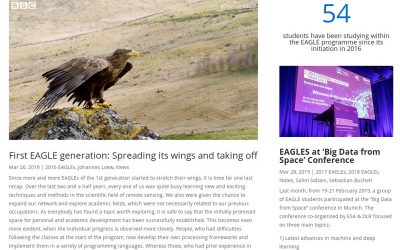Aim
The students will learn to design scientifically relevant presentations.
Presentations, approaches and layouts as well as programs will be discussed with regard to its scientific content and goal to ensure high quality presentations and dissemination of relevant information.
Content
Visual scientific presentation skills will be taught. Existing presentations will be discussed and evaluated with regard to visual appearance, scientific content and dissemination. Moreover design and appearance of presentations and poster will be discussed and guidelines provided. Individual training of presentations using a variety of programs will be part of it as well. Alternative presentation methods will be introduced (e.g. knitr, beamer).
Coding
Visual as well as coding approaches for presentations are covered
Software
Various software programs will be used, but mainly R with knitr, markdown, slidify etc. or Latex Beamer
Techniques
Different visualisation, oral presentation as well as preparation techniques will be introduced and practically applied.
Content
Theoretical and practical background of scientific presentations and their underlying assumptions and software are covered
General Course News and Updates
EAGLE students preparing for ESA LPS 2019
our EAGLE students are organizing a joint trip and accommodation to the ESA LPS symposium in Milan and are currently preparing all other things such as business cards. They are very much looking forward to many highly interesting presentations and to meet diverse...
Ahmed Saadallah successfully defended his thesis
We congratulate Ahmed for his great M.Sc. presentation and the whole audience for the very lively discussions on methods and implications plus historical reasons of the detected patterns. Another EAGLE M.Sc. students graduated and is now an Earth Observation...
check out the news blog by our students
Our EAGLE students are posting various news about their activities, experiences or codes they developed. Read about their past years within the EAGLE program, their participation in international remote sensing conferences or what they achieved within EAGLE courses....
M.Sc. thesis presentation by Ahmed Saadallah
Ahmed Saadallah will defend his M.Sc. thesis "The Potential of Earth Observation for Monitoring Agricultural Lands in Egypt (1984-2017)" on Wednesday 10th of April at 2pm in the student working room JMW 52. The need for accurate and timely information on the extent...
Sarah Nolting defended her M.Sc.
Congratulation to Sarah Nolting for successfully defending her M.Sc. thesis! Another interesting EAGLE M.Sc. thesis presented on flood risks and populations in urban environments.
Congratulation to Johannes Loew for a successful M.Sc. defense
We congratulate Johannes Löw to a great M.Sc. defense within the EAGLE colloquium! Another great remote sensing M.Sc. thesis has been defended within the EAGLE program.
Congratulations to Pilar for a successful MSc graduation
Pilar Endara Pinillos succssfully defended her M.Sc. thesis within the EAGLE colloquium. Congratulations to Pilar!
M.Sc. defense of Sarah Nolting
Sarah Nolting will defend her M.Sc. thesis "Risk Assessment for Flood Events based on Geo- and Socioeconomic Data – A Case Study for North-Rhine Westphalia, Germany" on Wednesday 27th 2pm in room 0.004 OKW 86. from her abstract: "The world’s population has doubled...
M.Sc. defense by Johannes Löw
You are all invited to join the M.Sc. presentation by Johannes Löw. He will defend his M.Sc. thesis on Wednesday 20th of March at 2pm in room 0.004 in OKW 86. from his abstract:Since Sentinel-1 A and B have become fully operational, it is now possible to generate...
Pilar Endara Pinillos handed in her M.Sc. thesis
Pilar Endara Pinillos handed in her M.Sc. thesis "Flooding patterns and vegetation developments in the Orinoco flooded savannas of Colombia." Her M.Sc. defense will be on Wednesday 13th at 2pm in room 0.004 (OKW 86). The ecosystems that are present within Colombian...










